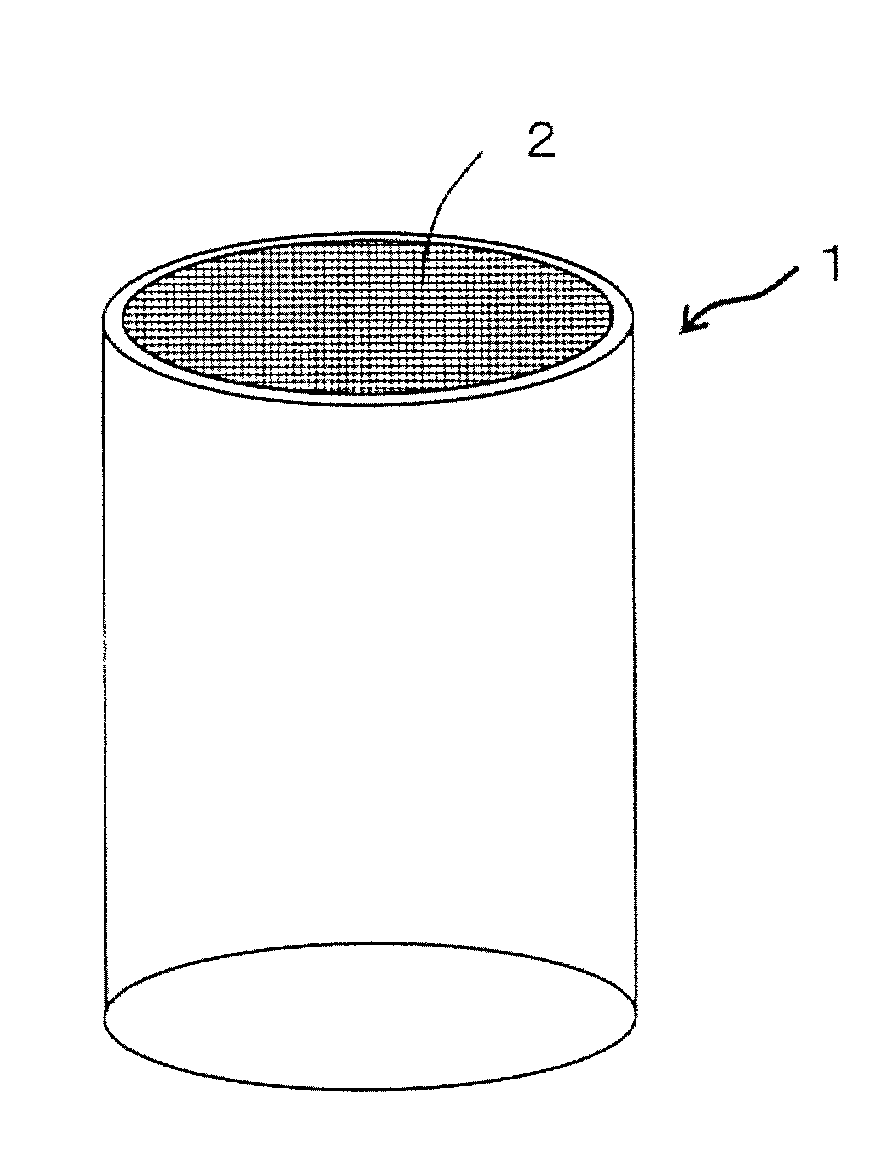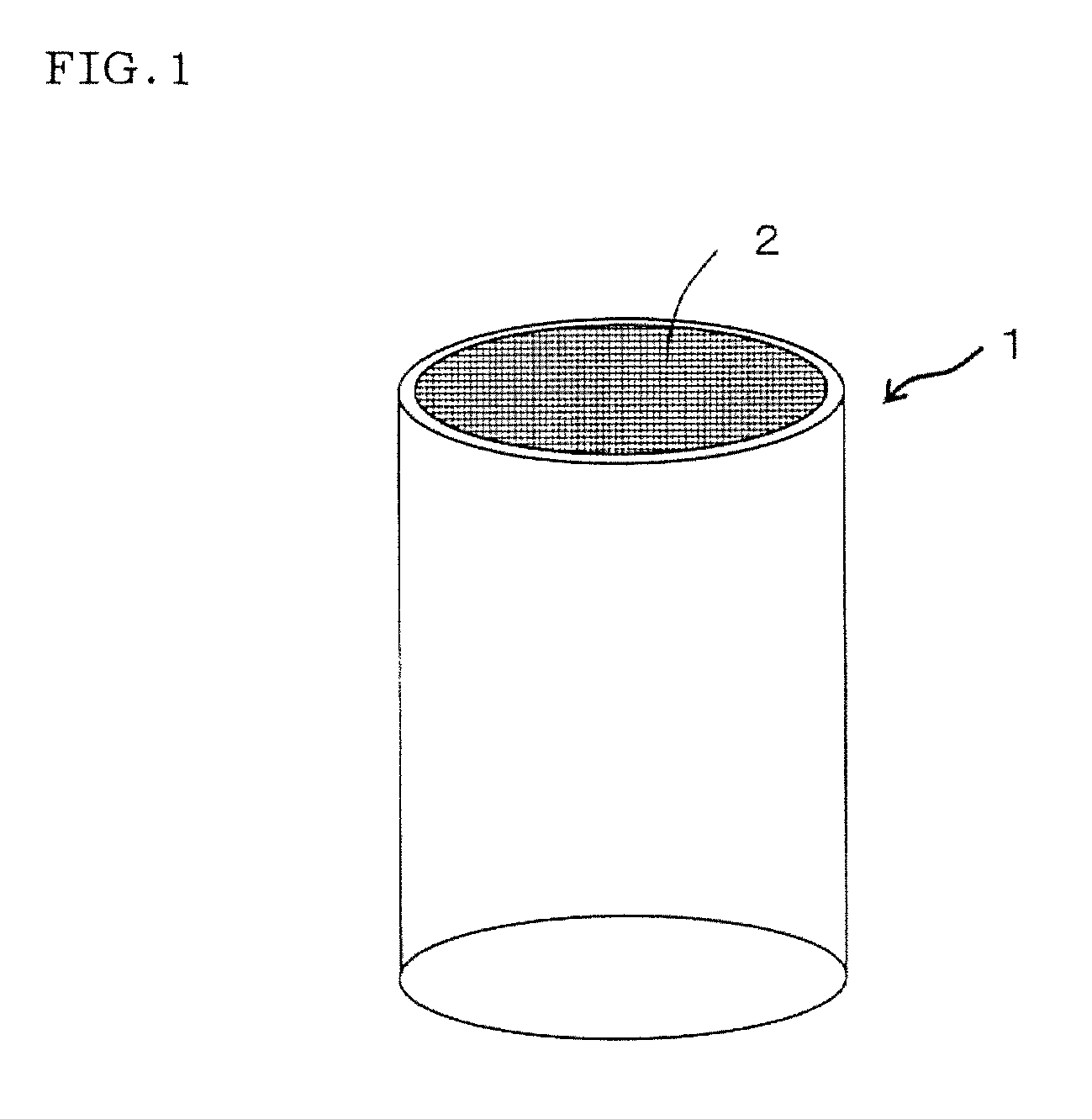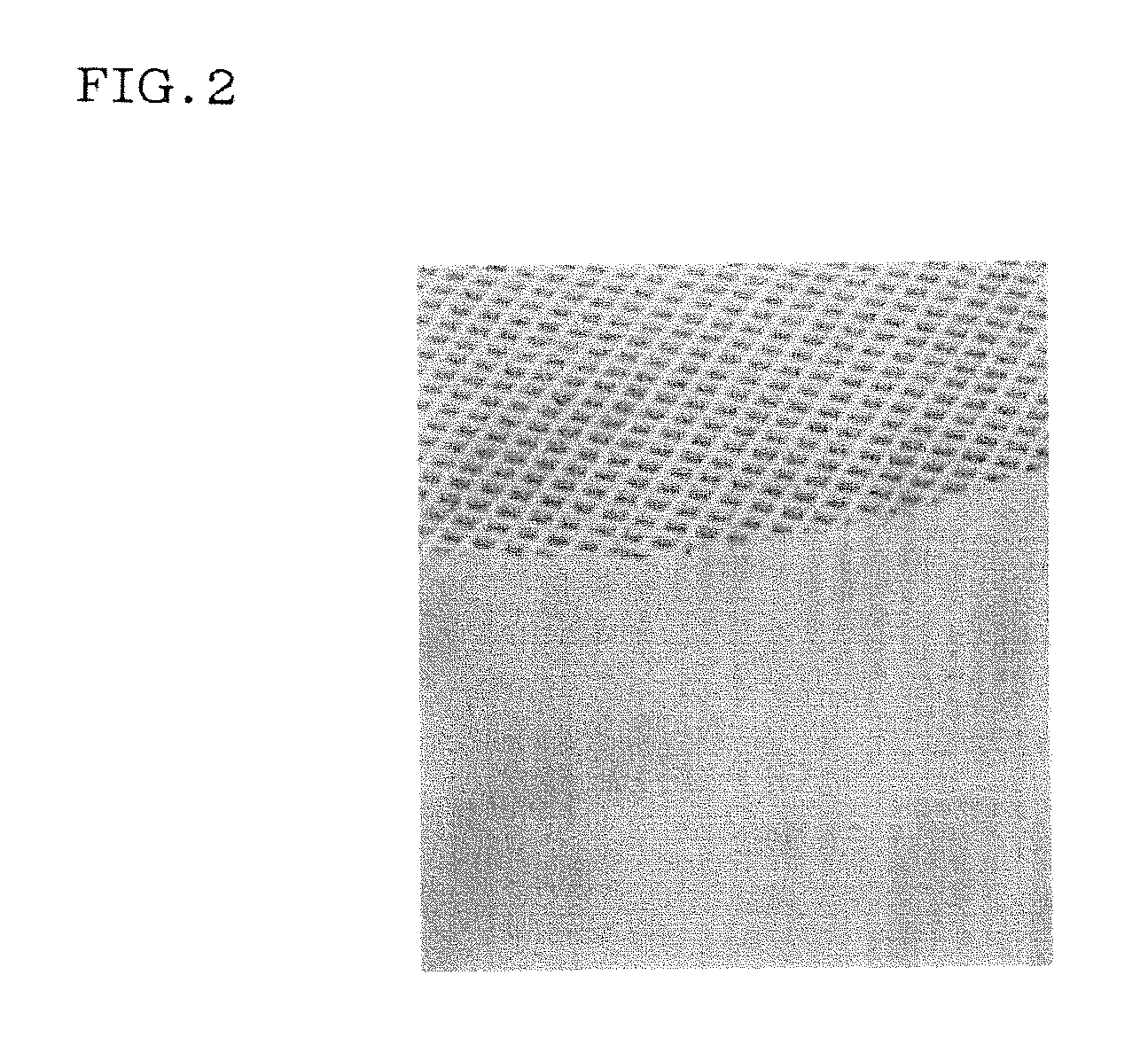Cordierite ceramic and method for manufacturing the same
a technology of cordierite ceramic and cordierite, which is applied in the field of cordierite ceramic, can solve the problems that titanium oxide greatly affects the color development of cordierite ceramic, and achieve the effects of preventing or suppressing the formation of titanium oxide components containing dissolved iron oxide, preventing the generation of spots, and preventing heterogeneity in appearan
- Summary
- Abstract
- Description
- Claims
- Application Information
AI Technical Summary
Benefits of technology
Problems solved by technology
Method used
Image
Examples
example 1
[0038]To 100% of the cordierite composition (no consideration was made on the impurity content) of Comparative Example 1 was added 0.3% by mass (relative to the cordierite composition) of a ZrO2 powder (purity: 99.9% by mass, average particle diameter: 1 μm). In the same manner as in Comparative Example 1 was produced a cordierite honeycomb. FIG. 2 is an overview photograph of the resultant honeycomb. In the material of Example 1, there was no red spots seen in Comparative Example 1 and the appearance showed a homogeneous color. A chemical analysis indicated that converted TiO2 content of the sintered body was 0.76% by mass, converted ZrO2 content was 0.27% by mass, converted HfO2 content was below the detection limit (0.01% by mass or less), and the molar ratio of ZrO2 / TiO2 was 0.23. Incidentally, Table 1 shows the TiO2 content in the raw material and the (ZrO2+HfO2) / TiO2 molar ratio.
(Evaluation)
[0039]Part of the cordierite honeycombs produced in Comparative Example 1 and Example 1...
examples 3 to 13
[0044]In Examples 3 to 13, cordierite honeycombs were produced in the same manner as in Example 1 and were examined for color, contents of components and crystalline phases. Example 10 is a case in which ZrSiO4 (zirconium silicate, purity: 99% by mass or more, average particle diameter: 5 μm) was added in place of ZrO2 of Example 1; and Examples 11 and 12 are cases in which HfO2 (purity: 99.9% by mass or more, average particle diameter: 3 μm) was added in place of ZrO2 of Example 1. In each of the materials of Examples 3 to 9 in which ZrO2 was added, the same effects as in Example 1 were seen. That is, there was improvement in color; formation of TiO2 was prevented or suppressed; and there was formation of ZrTiO4. In X-ray diffractiometry, as ZrO2 / TiO2 molar ratio became larger than that of Comparative Example 2, TiO2 peak became smaller or disappeared and there were seen formation or growth of ZrTiO4 peak. That is, the TiO2 component, which is considered to be a main cause of red s...
PUM
| Property | Measurement | Unit |
|---|---|---|
| molar ratio | aaaaa | aaaaa |
| particle diameter | aaaaa | aaaaa |
| 2θ | aaaaa | aaaaa |
Abstract
Description
Claims
Application Information
 Login to View More
Login to View More - R&D
- Intellectual Property
- Life Sciences
- Materials
- Tech Scout
- Unparalleled Data Quality
- Higher Quality Content
- 60% Fewer Hallucinations
Browse by: Latest US Patents, China's latest patents, Technical Efficacy Thesaurus, Application Domain, Technology Topic, Popular Technical Reports.
© 2025 PatSnap. All rights reserved.Legal|Privacy policy|Modern Slavery Act Transparency Statement|Sitemap|About US| Contact US: help@patsnap.com



